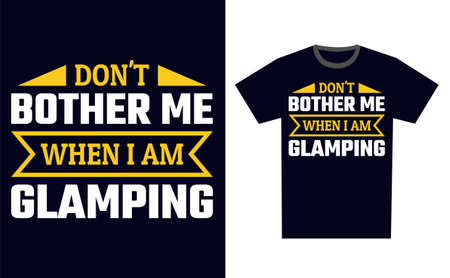1. Why Base Layers Matter on the Trail
When you’re hitting the trails—whether youre trekking through the Pacific Northwest, hiking the Rockies, or exploring the dry Southwest—your base layers can make or break your day. A good base layer is more than just another piece of clothing; it’s your first line of defense against moisture, temperature swings, and chafing. Let’s dive into why hikers across the US pay so much attention to what they wear underneath their hiking clothes.
Comfort Starts with Your Skin
The right base layer keeps you comfortable by wicking sweat away from your skin. This helps regulate your body temperature and keeps you feeling dry, even when you’re pushing hard on steep climbs or hiking under a blazing sun. On the flip side, a poor-quality base layer might trap sweat, leading to that clammy, cold feeling nobody wants on a long hike.
Moisture Management: Stay Dry, Stay Warm
Whether you’re in humid Florida or the crisp Colorado high country, moisture management is key. Wet skin cools quickly, which can lead to chills—even hypothermia—in colder weather. In hot conditions, excess sweat can cause rashes and discomfort. Here’s a quick comparison of how different types of base layer fabrics handle moisture:
| Fabric Type | Moisture Wicking | Drying Speed | Odor Control |
|---|---|---|---|
| Cotton (Cheap) | Poor | Slow | Poor |
| Synthetic (Cheap/Expensive) | Good | Fast | Varies |
| Merino Wool (Expensive) | Excellent | Moderate | Excellent |
The Impact on Trail Performance
Your choice of underwear isn’t just about avoiding wedgies—it impacts your overall hiking performance. Lightweight, quick-drying materials can help prevent blisters and chafing during long days on the trail. Plus, effective base layers help regulate temperature so you can focus on enjoying the view instead of counting down the miles until camp.
Base Layers Across Different US Climates
Hot & Humid (e.g., Southeast): Look for ultra-breathable synthetics.
Cold & Dry (e.g., Rockies): Merino wool shines for warmth without overheating.
Mild & Variable (e.g., West Coast): A blend of synthetic and wool often works best.
The Bottom Line: Don’t Overlook Your Underwear!
No matter where your adventures take you in the States, starting with the right base layer sets you up for success on every hike. In our showdown between cheap and expensive options, understanding what matters most for comfort and performance is key before you hit “add to cart.”
2. What You Get: Cheap vs. Expensive Hiking Underwear
Breaking Down the Differences
When you’re gearing up for a hike, your base layer is your first line of defense against sweat, chafing, and discomfort. But not all hiking underwear is created equal—especially when you compare budget-friendly options to pricier ones found in American outdoor stores. Let’s take a closer look at what sets them apart.
Materials Matter
| Feature | Cheap Hiking Underwear | Expensive Hiking Underwear |
|---|---|---|
| Main Fabrics | Basic polyester or cotton blends | Merino wool, premium synthetics (like nylon/elastane), bamboo blends |
| Moisture Wicking | Limited, may feel damp after sweating | Excellent moisture management, dries quickly |
| Odor Control | Little to none; can get smelly fast | Natural odor resistance (merino wool) or antimicrobial treatments |
| Sustainability | Standard materials, less eco-friendly production | Sustainable sourcing, recycled fabrics more common |
Construction Quality & Comfort Features
| Aspect | Cheap Options | Expensive Options |
|---|---|---|
| Seams & Stitching | Bigger seams, basic stitching that might cause chafing over time | Flatlock seams or seamless designs to prevent rubbing and irritation |
| Fit & Cut | Simpler cuts, less tailored fit; may bunch up during activity | Anatomical designs for men and women; better coverage and mobility support |
| Waistbands & Leg Openings | Standard elastic that may stretch out or dig in over time | Soft-touch waistbands, reinforced leg openings for all-day comfort and durability |
| Lifespan & Durability | Tends to wear out faster (holes, loss of shape) | Long-lasting fabric strength and elasticity even after many washes |
Technology & Extras: What Are You Paying For?
- Chemical Treatments: Premium brands often add anti-microbial or anti-odor tech you won’t find in bargain picks.
- Zoned Ventilation: High-end underwear sometimes features mesh panels in sweat-prone areas for better airflow.
- Packing & Care: Expensive pairs are more likely to be “easy-care”—machine washable and quick drying on the trail.
- Sustainability Labels: Look for certifications like OEKO-TEX® or bluesign® on pricier models if eco-friendliness matters to you.
- Pouch Support (Men): Anatomic pouch designs are common in premium men’s underwear for added comfort on long hikes.
So whether you’re shopping at Walmart or REI, knowing exactly what you’re paying for helps you choose the right hiking underwear for your adventure style—and your wallet.

3. Real World Testing: Performance in the Wild
When it comes to hiking, what really matters is how your base layers hold up out on the trail. We’ve gathered stories and feedback from US hikers who’ve tested both cheap and expensive hiking underwear during all kinds of adventures—from quick day hikes to epic thru-hikes like the Pacific Crest Trail, and classic weekend backpacking trips in places like the Rockies and Appalachians.
Day Hikes: Everyday Comfort Counts
Sarah from Colorado: “On local trails around Boulder, I tried a $10 pair of synthetic briefs from a big-box store and a $40 merino pair from a specialty shop. For short hikes, the budget option worked fine—no chafing, and it dried pretty quickly after sweating. But on hotter days, I noticed they started to smell faster.”
Quick Comparison: Day Hike Performance
| Feature | Budget Underwear | Premium Underwear |
|---|---|---|
| Moisture Wicking | Good | Excellent |
| Odor Control | Fair | Great (especially merino) |
| Comfort | Decent for a few hours | Softer and smoother all-day |
Thru-Hikes: Endurance Tested
Mike from Oregon: “I hiked the PCT last year with both Walmart undies and pricier ExOfficio pairs. The cheap ones lasted maybe 200 miles before losing shape and causing some gnarly chafing. The premium pair held up through rain, sweat, and weeks between washes—they cost more but definitely saved my skin.”
Thru-Hike Durability & Hygiene Table
| Criterium | Budget Underwear | Premium Underwear |
|---|---|---|
| Lifespan (miles) | 100–200 miles | 400+ miles |
| Chafing Prevention | Mediocre with heavy use | Excellent even after long days |
| Odor After Multi-Day Use | Pungent fast! | Surprisingly fresh (merino especially) |
| Easy to Wash/Dry on Trail? | Takes longer to dry, can get stiff | Drys quick, stays soft |
Weekend Backpacking Trips: Value vs. Luxury Feelings
Liz from Vermont: “For two-night trips in the Green Mountains, I actually rotate both types. The affordable pairs are fine as backups or for sleeping. But when I’m logging serious miles or expect rain, I reach for my high-end pair—they just feel better against my skin when things get tough.”
User Takeaways Across Different Adventures:
- If you’re just getting started or mostly doing casual hikes, budget underwear can work for you—just don’t expect them to last forever.
- If you’re planning long-distance hikes or multi-day trips where comfort and hygiene really matter, investing in premium underwear makes a noticeable difference.
- No matter your pick, always bring an extra pair. That’s one tip every US hiker agrees on!
4. Durability and Longevity Showdown
When it comes to hiking underwear, how long your base layers last can make or break your experience on the trail. Let’s break down how cheap and expensive options stack up over time, especially after multiple washes and rough adventures.
How Do They Hold Up?
Cheaper hiking underwear often uses basic synthetic blends that can stretch out, pill, or lose their shape pretty quickly—sometimes even after just a few washes. You might notice seams coming undone or elastic losing its snap. On the other hand, pricier options usually feature higher quality fabrics like merino wool blends or advanced synthetics with reinforced stitching. These stand up better against repeated wash cycles, intense sweat sessions, and friction from miles of hiking.
Durability Comparison Table
| Feature | Cheap Underwear | Expensive Underwear |
|---|---|---|
| Material Quality | Basic polyester/nylon; thinner fabric | Premium merino wool or tech fabrics; thicker weave |
| Seam Strength | Standard stitching (prone to unraveling) | Flatlock/reinforced seams (less chafing & more durable) |
| Elasticity | Tends to lose stretch fast | Keeps shape after many washes |
| Pilling/Fading | Pills and fades quicker with use | Resists pilling and color loss longer |
| Lifespan (average use) | 6 months to 1 year | 1 to 3 years+ |
Warranty Standards & Brand Return Policies in the US
A big part of longevity is what happens if your gear fails. Most budget brands offer only a standard 30-day return policy and may not guarantee against defects beyond that window. If you buy from Walmart or Amazon Essentials, you’re mostly covered for immediate manufacturing issues but not much else.
High-end outdoor brands like Patagonia, Smartwool, or REI Co-op often back their products with generous warranties. For example:
- Patagonia: “Ironclad Guarantee” covers most defects for life—if your base layer fails unexpectedly, they’ll repair or replace it.
- REI Co-op: One-year satisfaction guarantee for members; easy returns if you’re not happy with durability.
- Smartwool: Limited lifetime warranty covering manufacturing defects—if your underwear unravels early, they’ll likely swap it out.
Warranty & Return Policy Comparison Table
| Brand Type | Typical Warranty/Return Policy in the US | User Experience if Product Fails Early |
|---|---|---|
| Budget Brands (Amazon Basics/Walmart) | 30-90 day returns; limited warranty coverage for defects only | You may have to buy new pairs sooner; little recourse after return window ends. |
| Premium Outdoor Brands (Patagonia/REI/Smartwool) | Liberal returns (up to 1 year); lifetime/longevity warranties for manufacturing defects; repairs offered by some brands. | If something goes wrong early, getting a replacement or refund is usually hassle-free. |
In short, paying more up front can mean less stress about your base layers falling apart halfway through hiking season—and you’re backed up by some of the best customer service standards in the American outdoor industry.
5. Choosing What’s Right for You
Picking the best hiking underwear isn’t a one-size-fits-all decision—especially in the U.S., where hiking conditions and personal preferences vary wildly. Let’s break down when it makes sense to splurge on expensive base layers and when you can save your dollars with budget-friendly options.
When to Splurge: Invest in Expensive Hiking Underwear
If you’re planning multi-day backpacking trips, tackling high-altitude trails, or hiking in unpredictable weather (think the Rockies or Pacific Northwest), premium base layers are often worth it. Here’s why:
- Long-Term Comfort: High-end fabrics like Merino wool offer better moisture-wicking, odor control, and temperature regulation.
- Durability: If you hike regularly, pricier underwear stands up to frequent washes and rough use.
- Sensitive Skin: Advanced materials feel softer and reduce chafing—great for longer treks.
Best For:
- Serious hikers & backpackers
- Wet, cold, or variable climates
- Anyone prioritizing comfort over cost
When to Save: Go With Cheap Hiking Underwear
If your adventures stick to local trails, day hikes in mild weather, or you’re just getting started, affordable base layers can get the job done. Consider these points:
- Budget-Friendly: Great for families, beginners, or anyone watching their spending.
- Easier to Replace: If you lose a pair on the trail (it happens!), it’s no big deal.
- Sufficient for Casual Use: Synthetic blends handle sweat well enough for most short hikes.
Best For:
- Beginner hikers & casual walkers
- Mild climates & short outings
- Kiddos who outgrow gear fast
Quick Comparison Table: Splurge vs. Save
| SPLURGE (Expensive) | SAVE (Cheap) | |
|---|---|---|
| Main Material | Merino Wool / Technical Blends | Synthetic Blends / Cotton Mixes |
| Comfort Level | High (Soft, No Chafing) | Adequate (May Itch/Chafe Over Time) |
| Odor Control | Excellent | Basic/None |
| Lifespan | Long-Lasting | Tends to Wear Faster |
| Price Range (per pair) | $25–$60+ | $5–$15 |
| Ideal For… | Multi-Day Hikes, Harsh Conditions, Regular Use | Causal Hikes, Beginners, Budget Shoppers |
Your Decision Checklist: Ask Yourself…
- How often do I hike? – Frequent hikers benefit more from investing in quality gear.
- Where am I hiking? – Tougher climates call for better performance fabrics.
- What’s my budget? – Don’t break the bank if you’re just starting out or hiking occasionally.
- Do I have skin sensitivities? – Higher-end underwear is usually gentler on skin.
- Packing light? – Premium undies dry faster and pack smaller for thru-hiking.
The Bottom Line: Find Your Fit!
No matter where your trail leads—whether it’s a quick walk in a city park or an epic trek through Yosemite—there’s a base layer that fits your needs and wallet. In the U.S., choice is king! Decide what matters most for your adventures and pick the base layer that will keep you comfy mile after mile.

